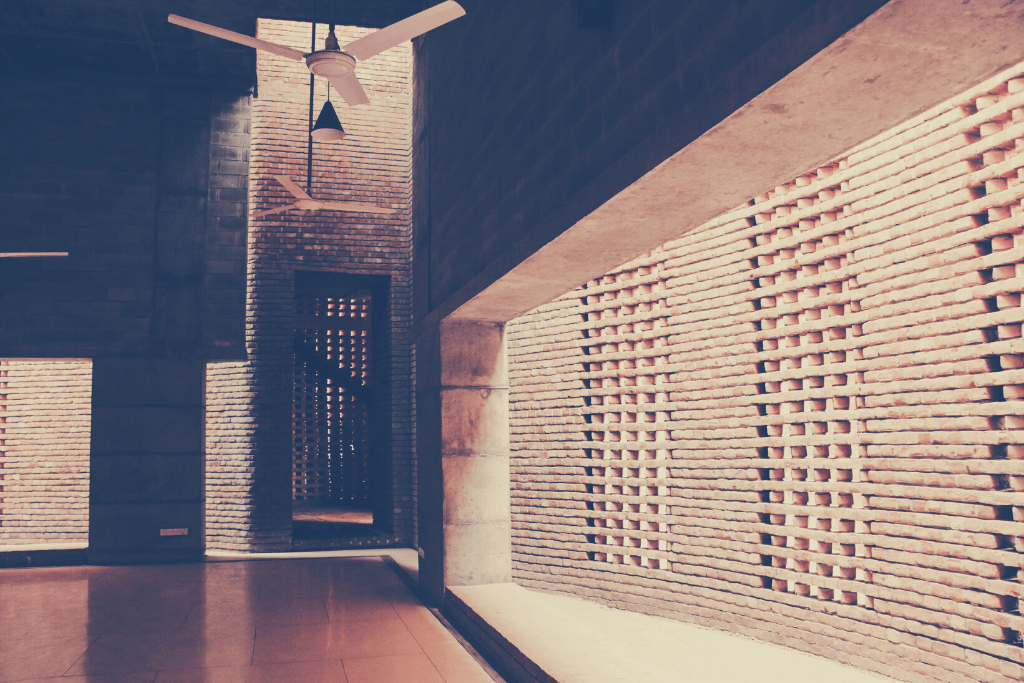“You can’t really call it land. It’s wetness. It belongs to the river,” says Marina Tabassum, talking to The Guardian about the Ganges Delta of her native Bangladesh, widely recognized as being acutely vulnerable to the impacts of climate change.
Architecture has come to symbolize durability and stability for most of the world’s cities and towns. But in Bangladesh, particularly in the country’s impoverished rural parts, people can lose livelihoods and homes overnight, and towns and villages can change irreversibly. How can an architect practice in such extreme conditions?
The work and life of Marina Tabassum — born in 1969 in Dhaka and currently heading her practice in her hometown — provide some answers to this question.
A Career Driven By Sense of Social Duty

When Tabassum grew up in a war-weary, fledgling Bangladesh in the 1970s, her father was the only doctor in the neighborhood. Each morning, before Tabassum’s father left for his clinical duties, he attended to the needs of a long queue of patients from a nearby slum who gathered in front of the Tabassum family home. Witnessing this compelled Tabassum to work on human-centric and mission-driven projects she’s become world-famous for.
After graduating from the Bangladesh University of Engineering and Technology (BUET) in 1995, she completed many landmark projects such as the Museum of Independence, Bangladeshi Independence Monument, and Bait Ur Rouf Mosque.
However, her low-cost and innovative approach to humanitarian design made Marina Tabassum a true global architectural icon. Her approach prioritizes local skills and materials, indigenous knowledge, and quickly prototyped buildings to exist in harmony with natural cycles.
In 2021, Tabassum was the winner of the Soane Medal for Architecture, making her the first architect from the Global South to earn this accolade. The award recognized her work as “architecture of relevance”, as her sustainable designs are driven by the mission of improving the lives of ultra-low-income Bangladeshis.
“As architects we have a responsibility to these people,” she says. “The construction industry contributes half of all global emissions, but the people being affected by sea-level rise in the coastal areas have zero carbon footprint.”
Local Solutions for Serving the “Bottom Percent”
As a young architect during the boom of the 1990s observing the urbanization of Dhaka, Marina Tabassum witnessed how every building started to look the same. As architecture globalized, quickly constructed buildings made of concrete, aluminum, and glass popped up everywhere.
The very same building could be in China, the Arabian Peninsula, or Bangladesh. However, Tabassum noted that these standardized materials were terrible fits for certain conditions: Concrete deteriorated poorly in a wet climate like Bangladesh. Likewise, glass couldn’t handle heat; it turned buildings into greenhouses, requiring energy-intense cooling systems.
“That’s what’s wrong with the kind of architecture where you take something from a cold country and bring it to a warm country like ours,” she says to Dezeen.
This reflection profoundly impacted the work Tabassum is most passionate about. For climate victims, landless, or moving populations of Bangladesh, Tabassum designed the “Khudi Bari“, meaning “Tiny Home” in Bengali: It’s a modular monsoon shelter that can be assembled and disassembled by hand in a short time. Made with bamboo and local materials, a “Khudi Bari” costs only GBP 300.
Tabassum acknowledges that it’s hard for an architectural studio to make ends meet while focusing solely on low-cost solutions. Hence, she still accepts select commercial and residential projects subsidizing her passion for humanitarian architecture.
Yet, she believes architecture and good design shouldn’t only serve the powerful high-income communities. Tabassum points to the global disparity between the rich and poor and adds, “It is not sustainable if we make ourselves available only to the 1 percent. We need to go beyond that.”






